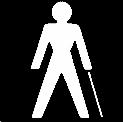

![]() Good quality of life
Good quality of life
1. Spatial Independence: knowledge and skill moving alone through increasingly more complex and challenging spaces
2. Movement independence: Moving when you want and where you want. Beginners need help navigating, but skilled travelers go anywhere they please without assistance.
3. Personal independence: from adults, from ones teammates. Traveling more and more on your own and less and less with adults or teachers.
4. Temporal independence: for a day, an hour, for ten minutes, each additional increase in time spent on one's own is a victory
The second goal is improved quality of life. We spend a great deal of time in education working on academic, "seat work" goals- left brain, accountability-driven responsibilities. We don't insist on, don't try to measure, and don't feel responsible (I guess) for the right brain responsibilities. However, we should own up to the job of surrounding children with positive energy, empathy, and with an environment that sets the stage for learning to occur. Quality of life is about happiness, inspiration, security, creative joy, good friendships, a sense of community involvement, and self actualization.

2. Knowledge: The next step is to begin understanding the layout, the services provided, the routes, the landmarks, and appropriate behaviors. To be able to repeat back to the teacher key ideas (differentiating a mall from a department store, defining a mall, being able to say who can help with problems while in a mall, etc.) is the next level of anticipated outcome.
3. Competence: The final stage is demonstrated competence. If a student can be dropped off at a mall, and be independent there (eating, bathrooming, getting help, shopping), then the best level of outcome is reached.

Navigational skills
Mobility skills

Personal skills
Consumer skills
Skills related to an awareness of the future

|